Speedy Tuesday – Omega Speedmaster Professional Mark IV
The Omega Speedmaster Mark series is a very exciting one. Some fans say that no collection is complete without them, others frown upon the thought of owning any. Again, others look at them as novelty watches of a bygone era. Remainders of a time when Omega was experimenting with various technical improvements. Regardless of which group we belong to one thing is for certain; the Omega Mark watches mark an era (no pun intended) in the history of the Speedmaster. So much so that 2 (the Mark II and III) even made it to the 60th-anniversary poster by Omega from 2018. Surely that poster does not feature of all the iconic Speedmaster but it’s a great indicator of what the brand considers ground-breaking of the time. Our topic of today – the Omega Speedmaster Professional Automatic Mark IV – didn’t make it to that poster. But that doesn’t make it less cool.
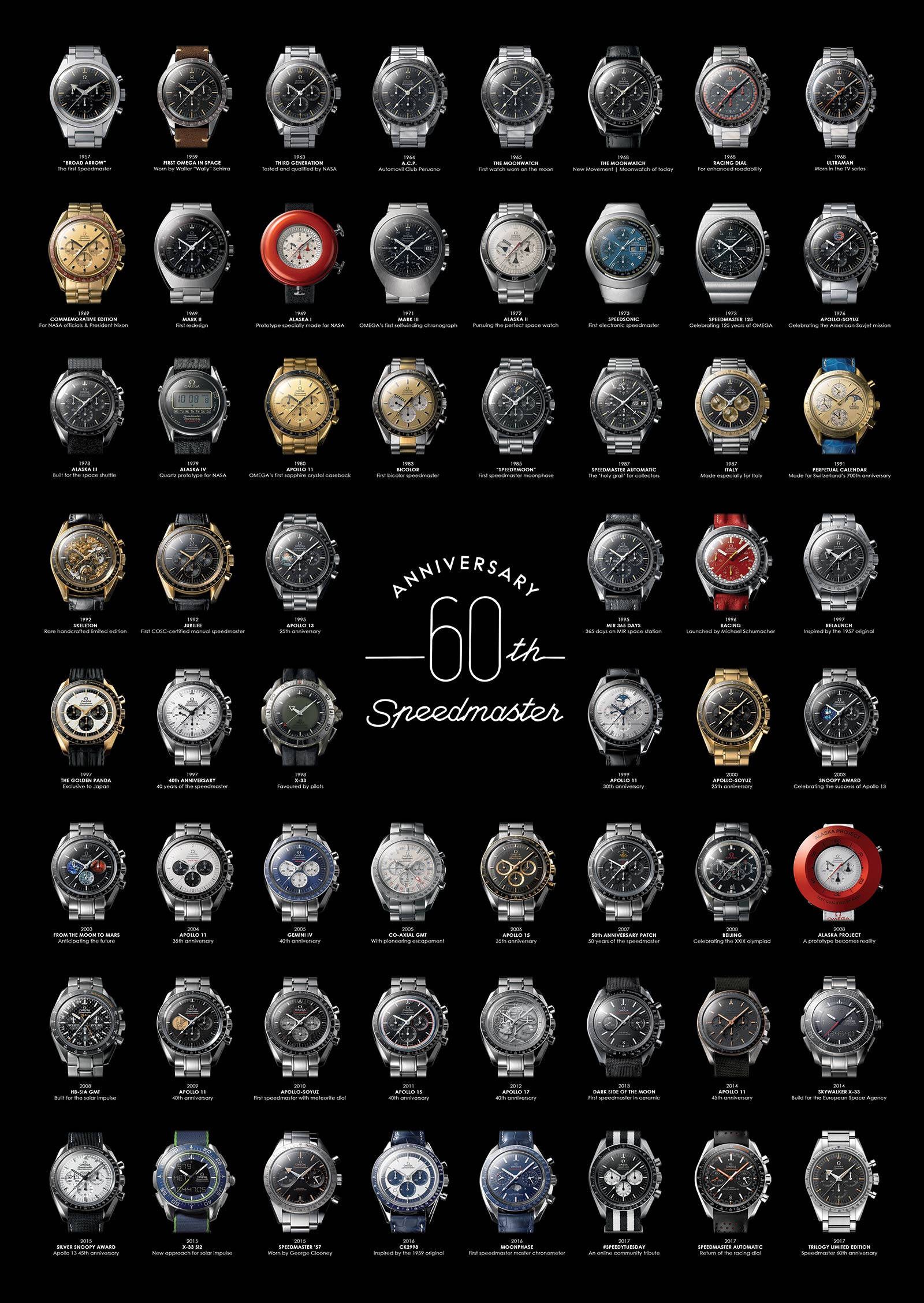
The Speedmaster 60th anniversary poster by Omega
Speedmaster Mark IV
The Omega Speedmaster Professional Automatic (ref. 176.0009) came out in 1973 the same year as the Omega Seamaster Yachting. It was the 3rd Mark in line (if we don’t count the 145.022, which some consider the Mark I) but only the second to feature the legendary calibre 1040, Omega’s first automatic chronograph movement based on the equally legendary Lemania 1340. Omega only marketed the Mark IV for a few years. Around 1974-75 Omega came out with a newer version under the reference 176.012. this is the model collector’s call the Mark 4.5 as it features elements both from its predecessor (Mark IV) and successor (Mark V). Despite the rather short production run of the Mark IV, numerous examples saw the light of day. Many are still around today for a fairly affordable price thanks to them not being the “hottest” Mark Speedmasters around. I think otherwise though.
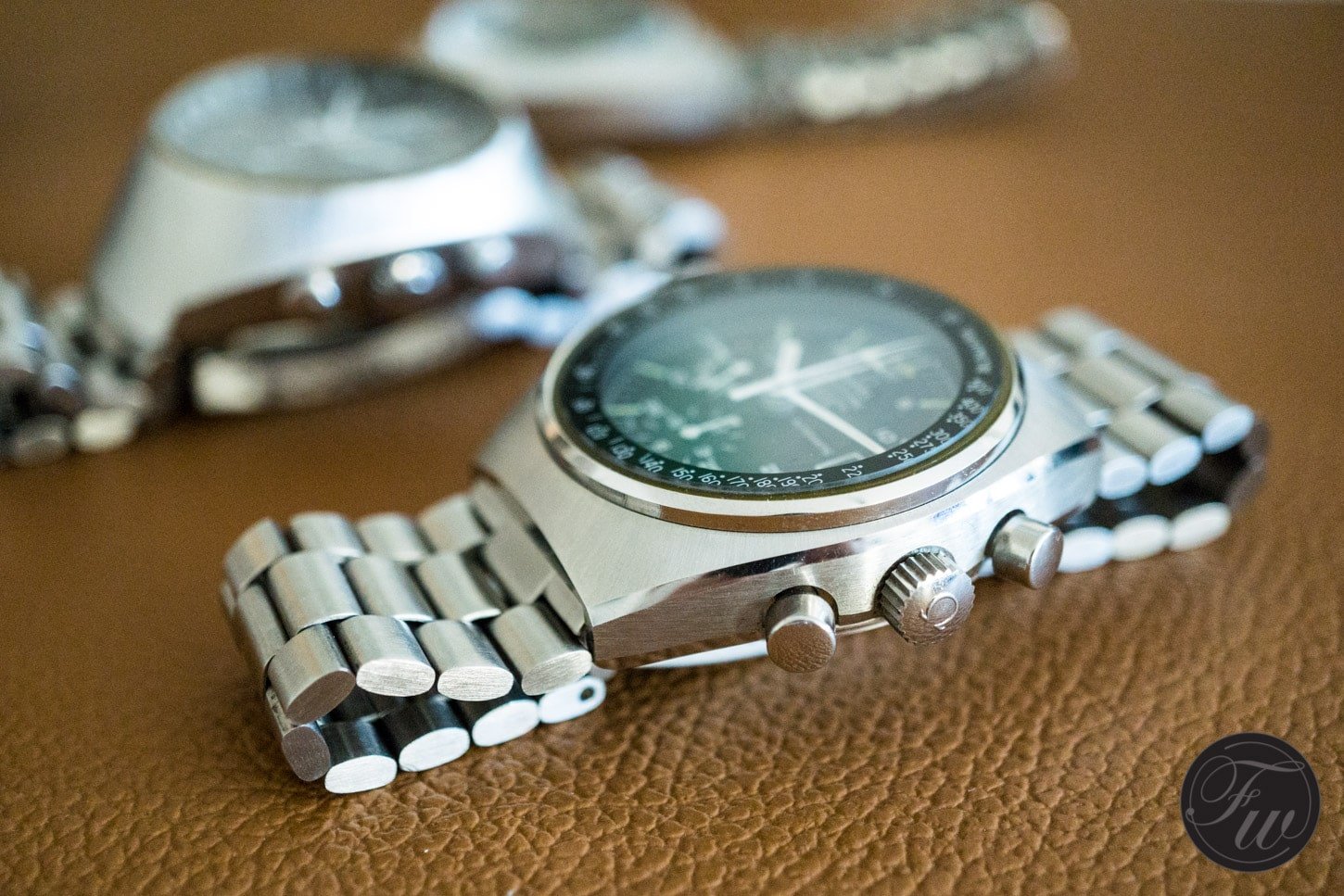
Mark IV at the front, Mark III in the back
Two-piece
While people often mix up the IV and the 4.5 (which oddly was also named Mark IV by Omega, though it did not say it on the dial) reality is that its similarities come from its two predecessors; the Mark II and III. The cushion/barrel-shaped case is very similar to the Mark II’s housing. Although the Mark II is 41.1mm not including the crown, the Mark IV is a few mms thicker at around 41.4mm. Both models are 45.3mm long between the hooded lug ends. The thickness is also similar at around 15mm for both watches. The polishing is identical. The case has a sunburst finish on the top, brushed sides and a slim polished edge on both sides. The back of the case has a bit of all 3 of the aforementioned finishing. Brushed in the center, sunburst on the edges and polished around the case back.

Both Mark II and IV watches have flat mineral crystals where the tachymeter scale is printed on the inner side of the crystal. Since the dial is sitting lower in the case it gives a nice depth between the crystal/bezel and the dial itself. The most obvious difference between the II and IV is the fact that the IV has a two-piece case. This is not a unique thing though, as the 4.5 or the Speedmaster 125 have similar case designs. What it means is that the movement fitted with the dial and hands is in a round case which is pressed into a case frame. This cushion shape frame has the lugs and the bracelet linked to it. The various gaskets and other mechanical designs hold the two pieces together. The Mark IV’s case back only features the text “Speedmaster” with the hippocampus (sea monster) and the Omega logo.

Calibre 1340 -> 1040
Now that we compared the Mark IV to the II let’s look at its other predecessor; the Mark III. The Omega Mark III came out two years prior to the Mark IV, in 1971. As is known, the Mark II (both normal and racing) still had the calibre 861 in them. The Mark III was among the first watches (and clearly the first Speedmaster) to feature the calibre 1040, Omega’s first self-winding chronograph movement. As Omega left the 861 after the Mark II and started using the 1040 or its derivatives in the Mark series it’s no surprise that the Mark IV would have the same movement as the Mark III. The Omega calibre 1040’s base movement is the Lemania 1340. That calibre went into many different models from Croton to BWC or Tissot. Omega modified this calibre by adding a 24-hour indicator to the running second subdial.
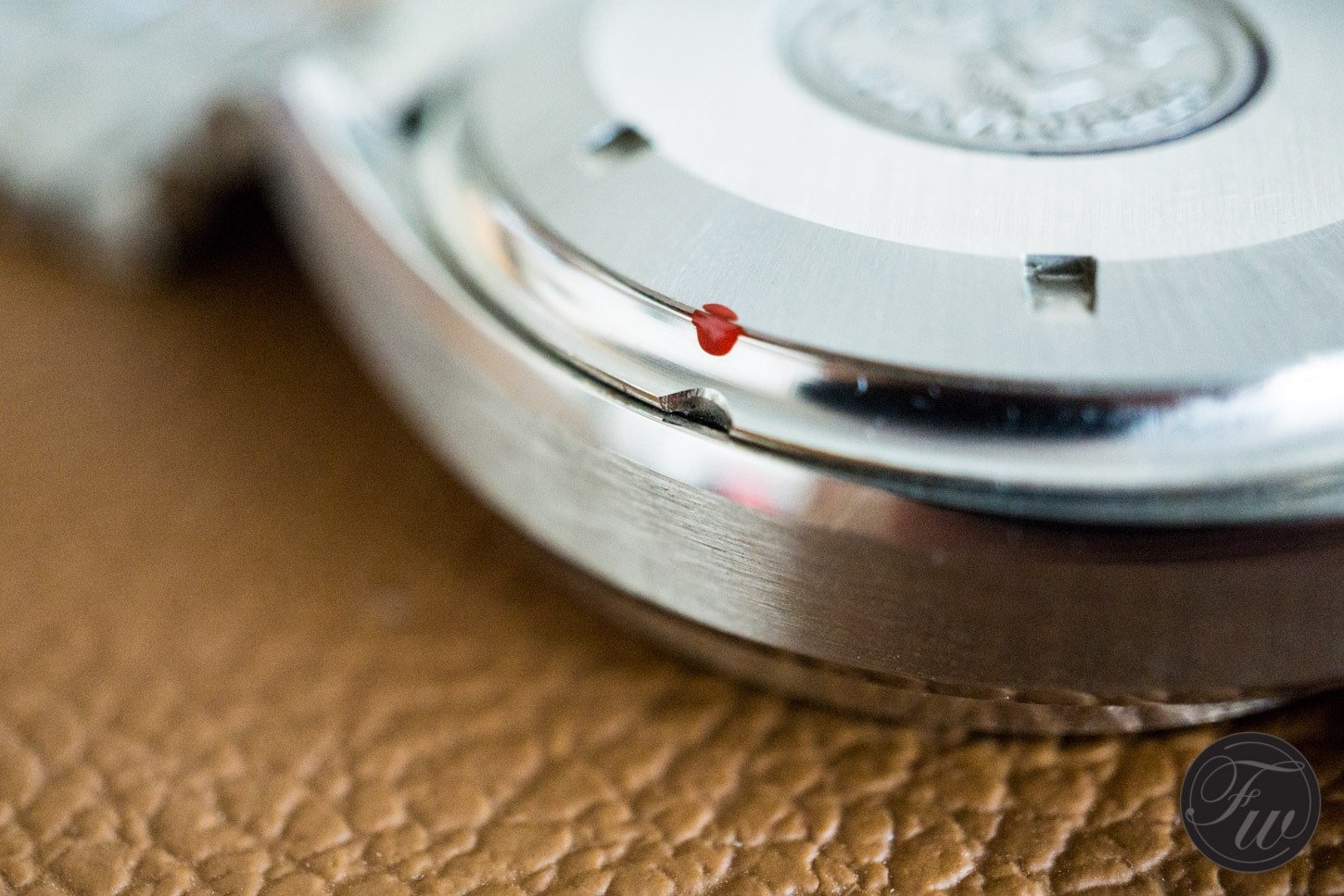
The little red seal vintage Omega collectors die for
The Omega calibre 1040 is an automatic, chronograph movements with quick-set date and 24-hour indicator. It has 22 Jewels with a frequency of 28.800 A/h and around 44 hours of power reserve. It is a workhorse of a movement with a tendency of ageing and developing some issues over time. Two variants – or improved versions, if you will – exists namely; the calibre 1041 and the calibre 1045. 1041 is basically the same as the 1040 but it has COSC certification. This movement only went into the Speedmaster 125, the anniversary model Omega released for the company’s 125th birthday. 1045 is a derivative of the new Lemania 5100 calibre, which is based on the old Lemania 1340 calibre. With combining the revolutionary 1040 movement of the Mark III to the then-new case shape of the Mark II Omega created a best-of-both-worlds watch with the Mark IV.

A bit of grey, a bit of blue
The similarities of the Mark III and IV continues on the dial. Aside from a minor font change, the two dials are identical. Of course, the name is swapped to “Mark IV” from “Mark III” under the texts “Omega Speedmaster Professional”. The Omega Mark II had two types of dials (regular black and racing with orange accents and hands). The Mark III had 3 colours (silver, blue and black) and 2 different layout versions. Conversely, the Mark IV only had one type and one colour of the dial. Aside from the above text under the 12 it also features the word “Automatic” next to the date window at 3. At 6 you can find the 12-hour subdial and at 9 the continuous seconds subdial and the 24-hours indicator.
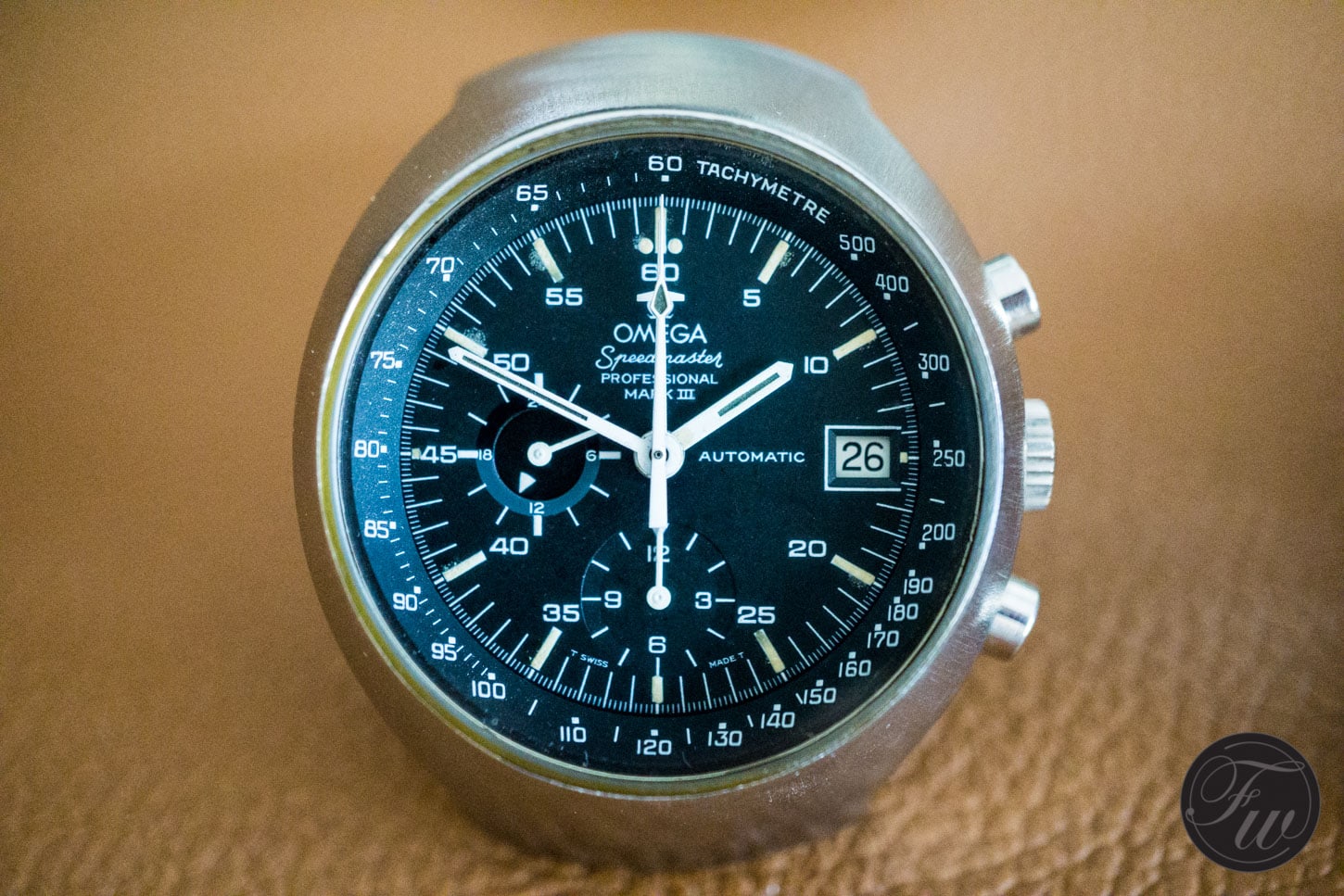
2nd execution (black) dial on the Omega Speedmaster Mark III
Here, the dial has a cut-out and a plate with a triangle marker is placed under it, rotating around once in every 24 hours. It marks the hour, showing us whether it’s AM or PM. From 6 am to 6 pm the rim of the cut out has a segment painted grey. On my Mark III dial, it’s dark grey while on the Mark IV dial it’s brighter. However, I have seen both dials with darker and also with light grey paint. I presume this is a production disparity. Sometimes you can find a Mark IV with a dial where the 6 pm to 6 am part, so the upper side of the sub dial, received a blue paint, complementing the grey lower side. This is a service dial and actually rarer than the original black/grey version.
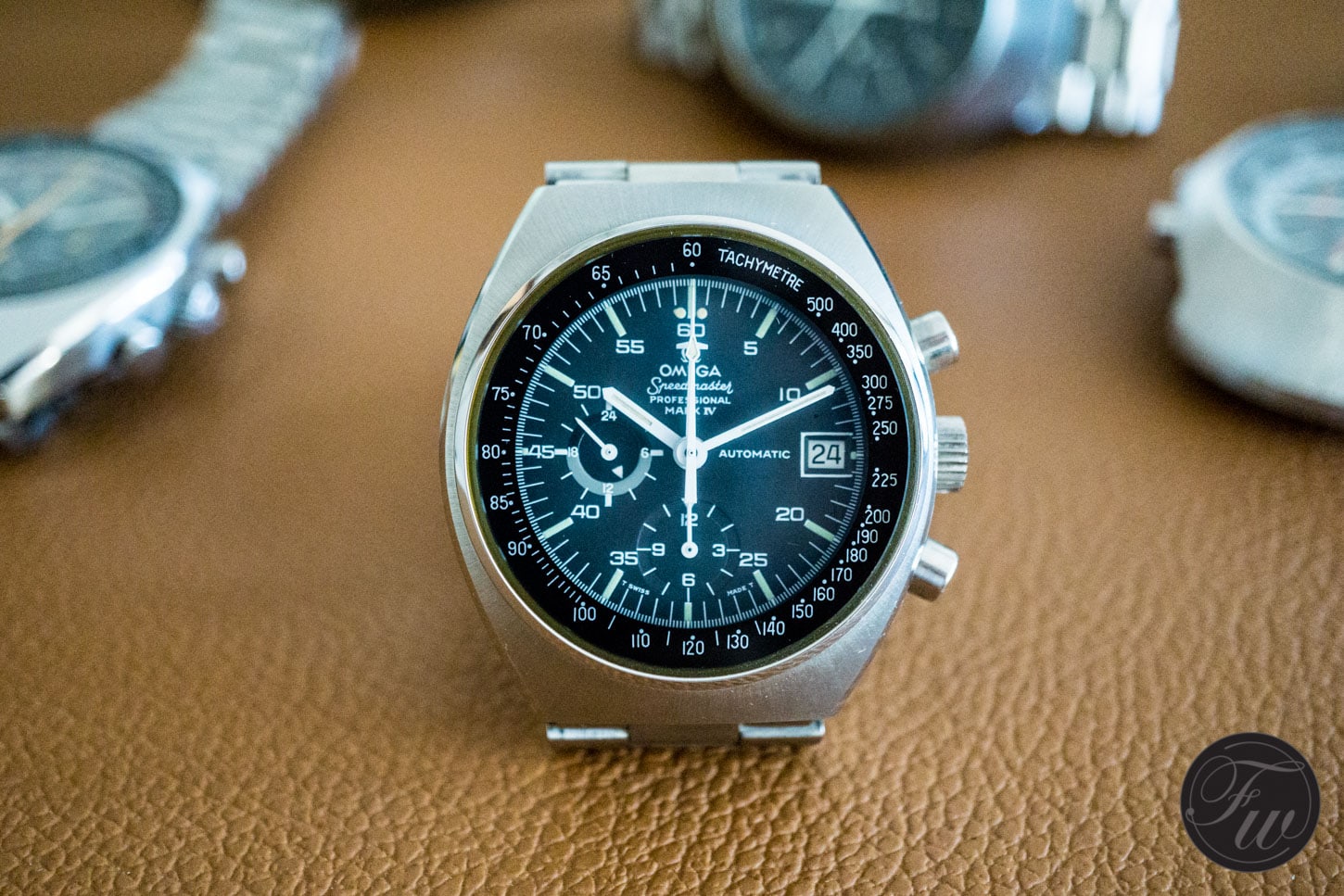
Corfam or Steel?
The Omega Speedmaster Mark IV was available on a bracelet or on a sporty corfam strap with Omega buckle at the time when new. Funnily enough, all of the original catalogue images I found (mostly from 1974 and 1975) show the watch on the corfam strap and none on the steel bracelet. From 1976 you already see the Mark 4.5 in catalogue exclusively on a bracelet. I did a bit of research on sites like Chrono24, eBay and Watchrecon. 98% of the watches there all come with a bracelet. The bracelet for this, as well as for the Mark II and Mark III, was the reference 1162 with straight 172 (22mm) end links. Now I’m not saying that these watches could not come with other reference number bracelets but the style, as well as the info in some old catalogue, suggest that 1162 was the preferred one.


New Old Stock (NOS)
The images in the article show my Omega Speedmaster Mark IV, that I bought with the original box as new old stock not too long ago. I already had the Mark II Racing and the Mark III, so I thought it would be a great addition to my Mark collection. One of the reasons I wanted to write this article is to show you how a Mark IV came out when it was new. The full-length bracelet, the trapeze Omega logo on the clasp or the red seal dot all suggest that this timepiece has never seen a watchmaker’s shop. This is why I do not even know what the production year of my watch is. Amazingly, the watch keeps time way within 10 seconds/day. I know, I should have it serviced and not touch it until it’s done, and I will. Until then, enjoy the photos of this untouched beauty.
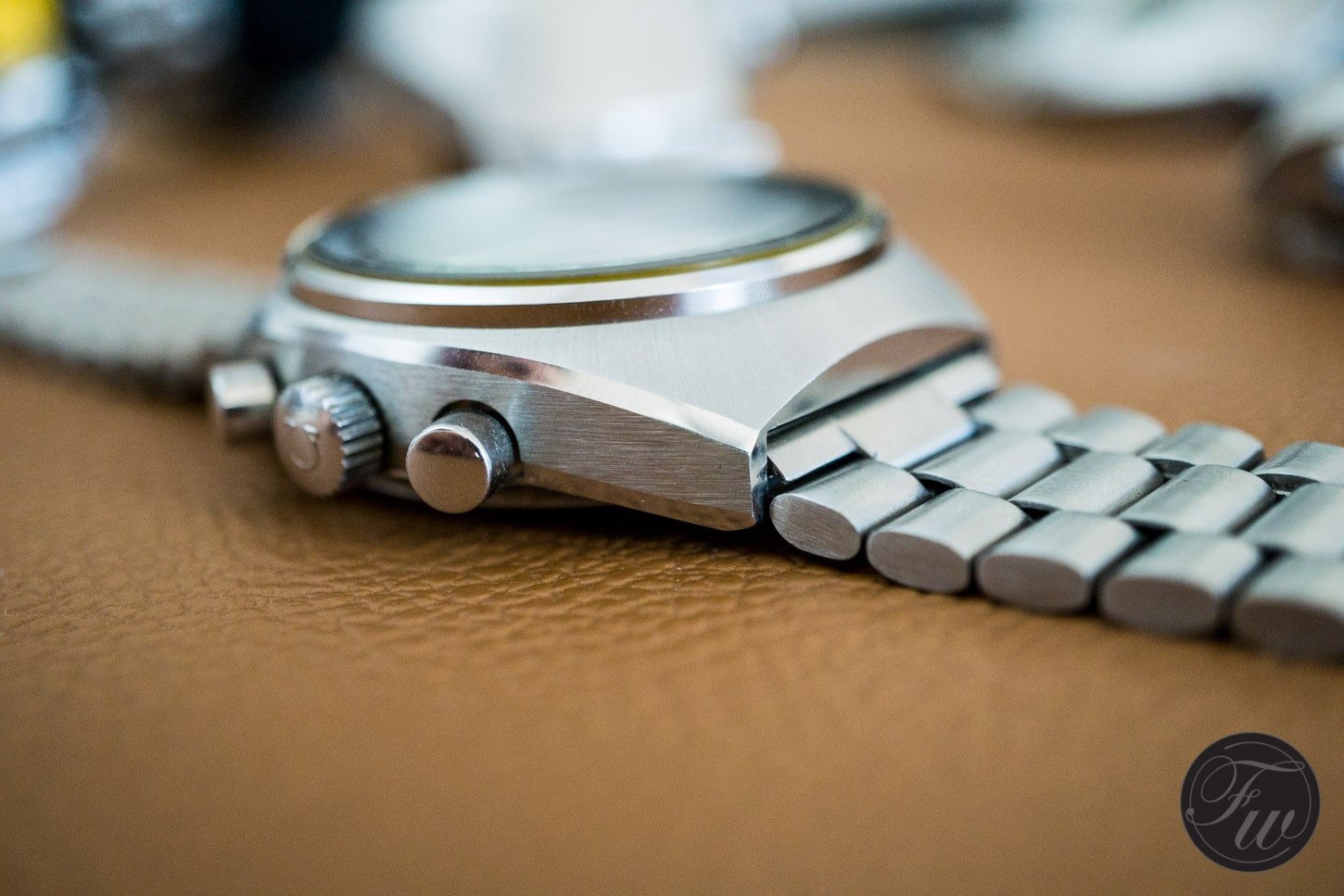
Sharp as a knife
Prices
When new (based on a 1975 catalogue) the Mark IV was 157 GBP which, according to the CPI Inflation Calculator, would be around 1.279 GBP (€1.437) today. Another catalogue from July 1975 gives us the retail price of the watch in Deutsche Mark. It was 895 DM. Converted to today’s Euro it would be very similar to the British price, at €1.283. As a comparison, a BMW 525 at the time was about 20.000 DM, but a VW Beetle was only 6.600 DM. If you want to buy a Mark IV today the price for an example in good condition is around €1.800-2.200. Keep in mind that this is the price of one with original bracelet and end links. As the movement is not the simplest if it needs a service the cost would be a good few hundred euros on top of the purchase price. So buy cautiously.

Ahead Of Its Time
As I already said it at the beginning of my article, the Mark IV is not everyone’s favourite watch. Having read this article, this might change your mind if you belonged to this category. It is an underrated model. A watch that shows the evolution of Omega timepieces of the early 1970’s. Its functions are useful and can still come in handy. The case shape was ahead of its time. Just think of how these barrel/cushion shape watches were everywhere in the 1980’s. Take the bracelet off and throw the watch on a racing strap or even a NATO. It will look perfect. I’m not patronizing the Mark IV, just trying to point out its advantages. I enjoy wearing mine every once in a while, and it is a piece I do come back to from time to time. Give it a chance and you won’t be disappointed.




















